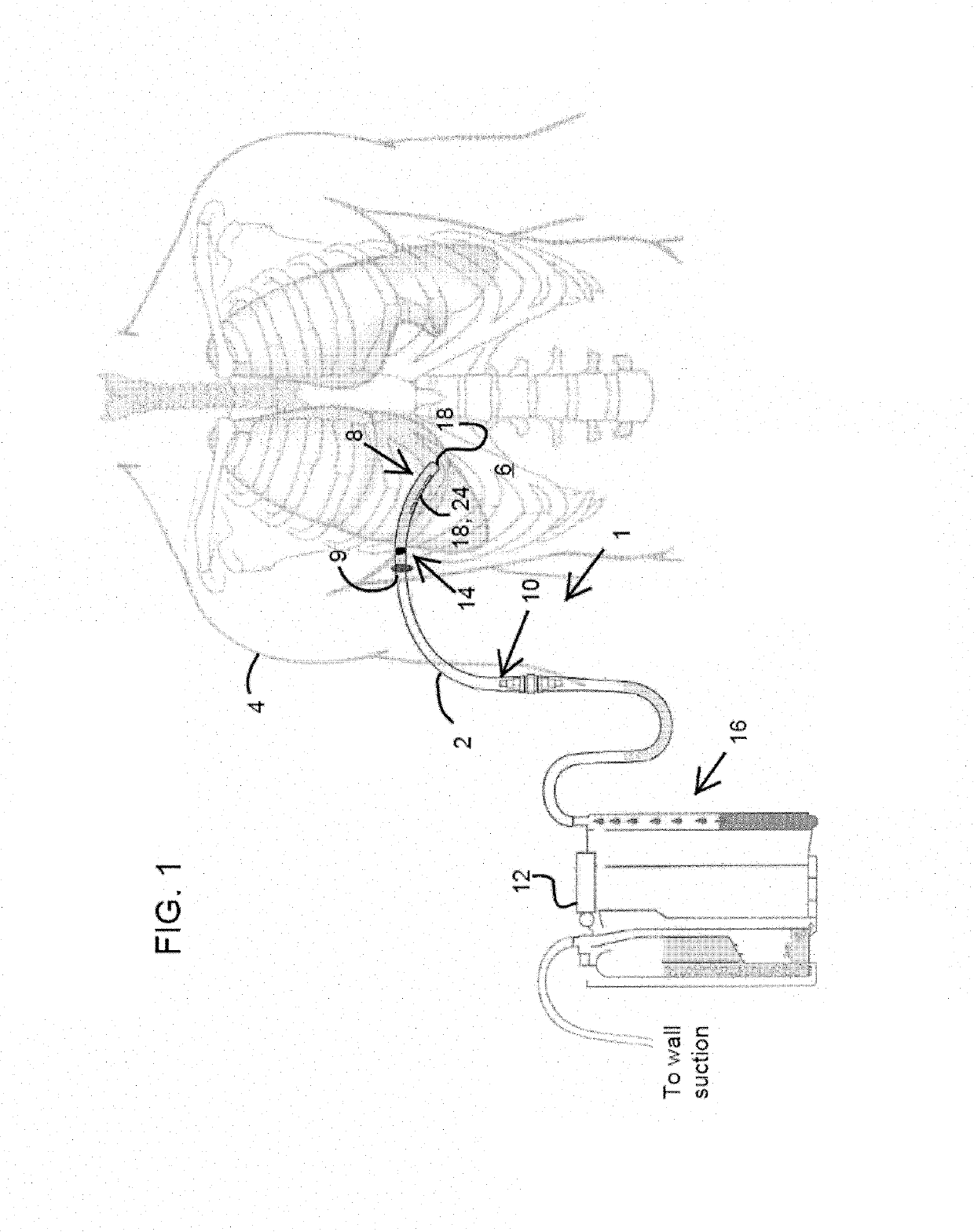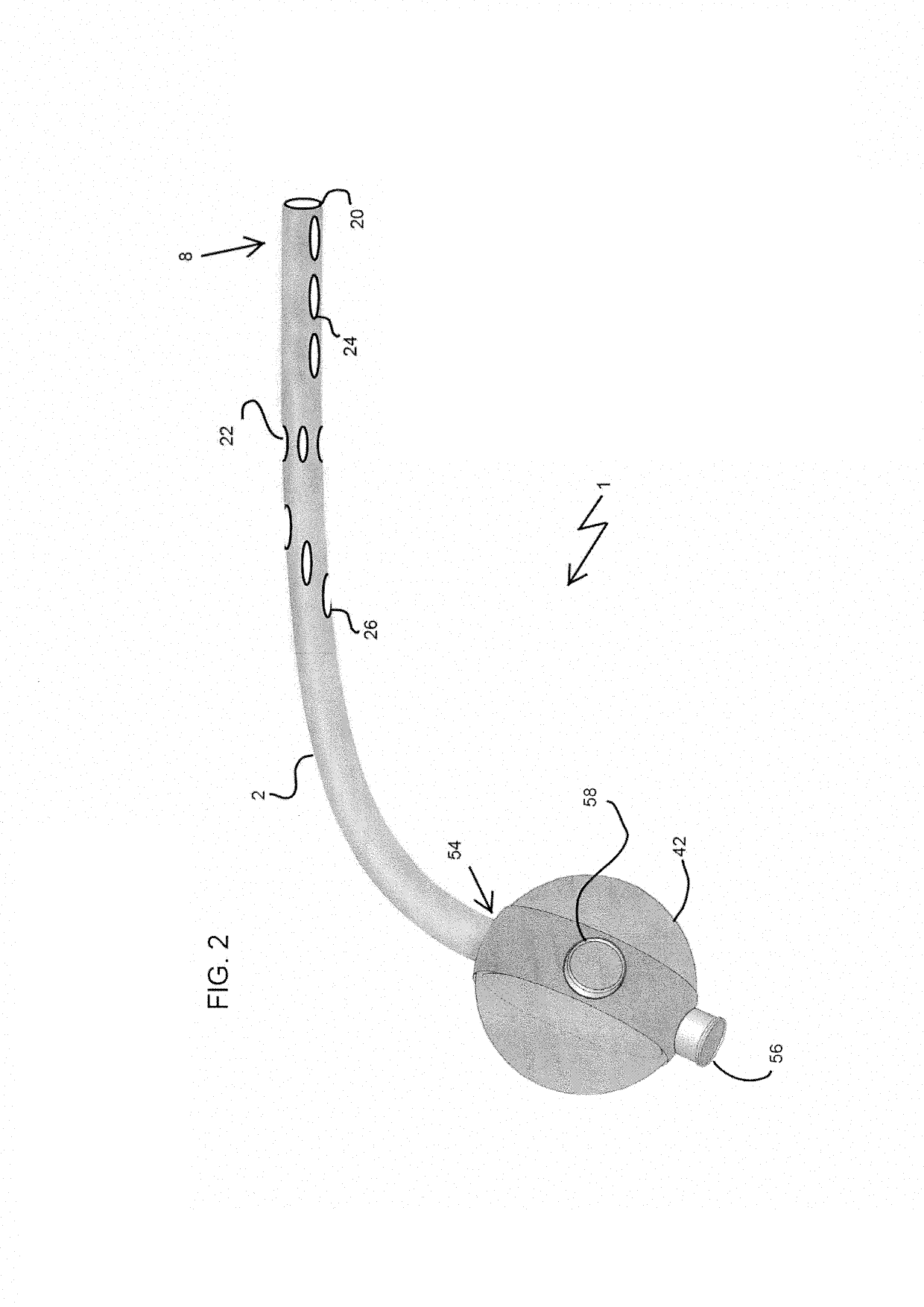Thoracic catheter device
a catheter and thoracic technology, applied in the field of thoracic catheters, can solve the problems of thoracic catheter, obstruction or blockage, and the ideal functioning design of the device has been so far stubbornly elusive, and achieve the effect of reducing patient discomfor
- Summary
- Abstract
- Description
- Claims
- Application Information
AI Technical Summary
Benefits of technology
Problems solved by technology
Method used
Image
Examples
first embodiment
[0033]Turning now to FIG. 1, a brief description concerning the various components of the present invention will now be briefly discussed. As can be seen in this first embodiment, the invention is a thoracic catheter system 1 comprising a flexible or semi-flexible chest tube or thoracic catheter 2 made from plastic, silicone, rubber, metal, or some combination thereof. A distal end 4 of the thoracic catheter 2 is inserted into the thoracic cavity 6 of the patient 8 through an incision 9, and a proximate end 10 of the thoracic catheter 2 is connected to a suction canister 12 or wall or other suction. The thoracic catheter 2 will preferably include special internal coatings, such as, inter alia, polytetrafluoroethylene (“Teflon”), Tethered-Liquid Perfluorocarbon (comprising a monolayer of perfluorocarbon and a layer of liquid perfluorocarbon), silver ionic, silver nanoparticles, copper, copper alloy, organosilanes, gold, titanium dioxide, and carbon nanotubes, to help prevent clot or ...
second embodiment
[0036]the thoracic catheter system 1, as shown in FIG. 2, includes a three way valve 42 which is one of fused / permanently attached and removably attached to the outer proximate end 10 of the thoracic catheter 2.
[0037]One embodiment of the three way valve or medical stopcock 42 consists of a chamber part or hollow body 44, with three through holes 46 of preferably equal diameter at 90° degree intervals along a circumference of the hollow body 44. While the hollow body 44 is shown in the shape of a sphere, it may also have the shape of an oblate spheroid, a prolate spheroid or a cylinder, for example. An inner surface of the hollow body 44 is preferably a smooth sphere, spheroid, or cylinder, except for the through holes 46 extending through the wall of the hollow body 44. An outer ring 48 with the external ports 50 is placed around the hollow body 44 perimeter. The outer ring 48 can be rotated around the hollow body 44, or, conversely, the hollow body 44 can be rotated within the out...
PUM
 Login to View More
Login to View More Abstract
Description
Claims
Application Information
 Login to View More
Login to View More - R&D
- Intellectual Property
- Life Sciences
- Materials
- Tech Scout
- Unparalleled Data Quality
- Higher Quality Content
- 60% Fewer Hallucinations
Browse by: Latest US Patents, China's latest patents, Technical Efficacy Thesaurus, Application Domain, Technology Topic, Popular Technical Reports.
© 2025 PatSnap. All rights reserved.Legal|Privacy policy|Modern Slavery Act Transparency Statement|Sitemap|About US| Contact US: help@patsnap.com



